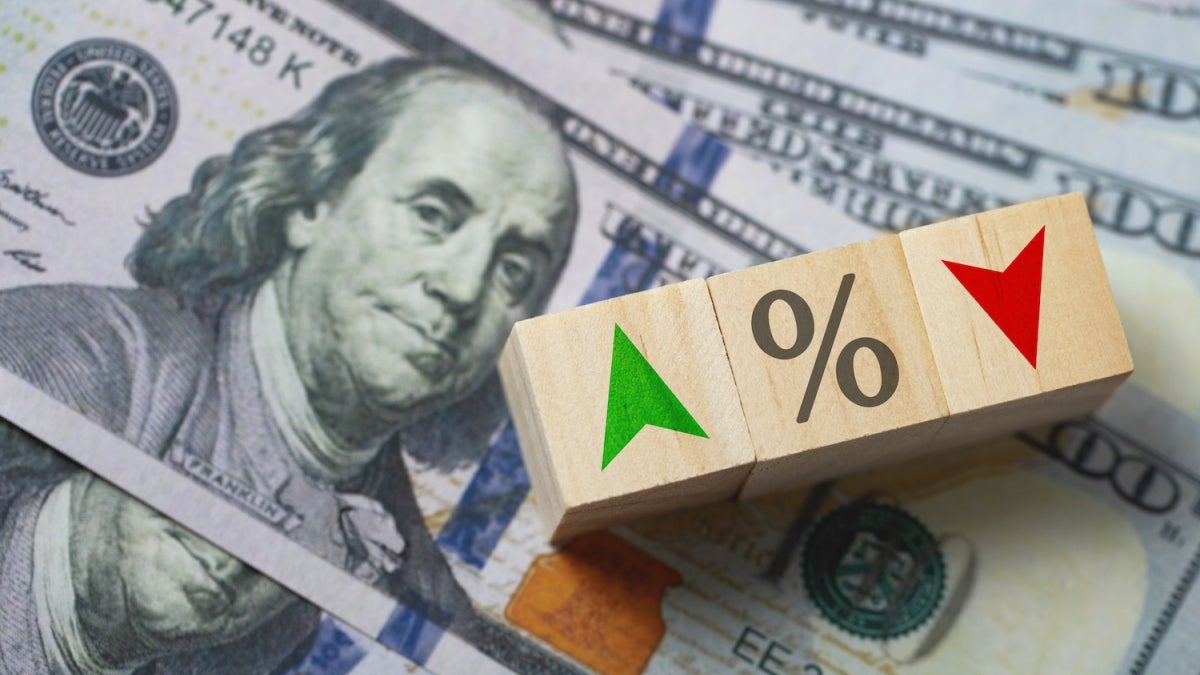We thought it was going to be a temporary thing. But it doesn't appear that way now.
Inflation has been sapping American consumers for the past year, putting a strain on everyone’s pocketbooks. Everyone thought they could brave the storm for a while, but the storm appears to be picking up wind.
Inflation has hit a 40-year high of 7.9% thanks to the rising costs of consumer goods, higher material prices, labor shortages and supply chain issues. And now with the rising cost of fuel, indications are pointing to the fact that we’ll be paying more for a little while longer.
ASU News tapped Dennis Hoffman, professor of economics and director of the L. William Seidman Research Institute at Arizona State University's W. P. Carey School of Business, to discuss when inflation starts and when it stops.
Dennis Hoffman
Question: The U.S. has hit a fresh 40-year high of 7.9% regarding inflation, and that was before this week’s oil spike. What are all the elements and factors pushing this?
Answer: Oil was below $70 a barrel in December and surged to over $90 in February, so some of the surges in energy prices are already in the numbers. The overall inflation rate is being fueled by a host of factors, but the surge in energy and food prices were the primary catalysts for the February increase. And the food price increase was, in part, due to higher transportation costs.
Q: To be clear, do we have a shortage issue, a supply chain issue or an economic issue at play here?
A: All the factors driving inflation can be explained by the principles of supply and demand. For perspective, inflation occurs when there is “too much money chasing too few goods.” For much of the past 12 years, goods flowing through efficient global supply chains met the demands of consumers, and price appreciation was in the 2% range despite a very accommodative monetary policy that kept interest rates low. Significant expansion in U.S. domestic oil production helped to mitigate any energy-induced price pressures. The pandemic upset this delicate balance.
Initially, factories were shuttered to stem the spread of COVID-19. And in many places, they were slow to open despite indications that demand for consumer goods increased while services (entertainment and travel) declined. Shortages began immediately popping up, and the only way to ration limited goods was through higher prices. Thus, the spiral began, and goods and labor shortages persisted throughout the pandemic. While some signs of easing appeared this winter, the geopolitics of Russia/Ukraine intervened as soon as troops began to assemble on the Ukrainian border. And history has demonstrated that energy price escalations cause inflation to accelerate across countries around the world.
Q: This past week, the U.S. slapped hard economic sanctions on Russia for the Ukraine invasion, including not buying oil imports from Russia. How will that impact us here in the states?
A: Oil is traded on a world market and Russia is a significant supplier of most of Europe. The loss of Russian oil will push prices higher unless other major producers step up to fill the void. The lesson here is that economic sanctions create hardships for the country receiving them, but also result in pain for consumers worldwide. Unfortunately, a host of “bad actors,” including Russia, Iran and Venezuela, are all significant oil producers. And all of this is taking place against a backdrop of concern over the role fossil fuel consumption contributes to climate change. This concern has manifested itself into a slowing of private investments in the U.S. oil patch.
Q: How closely tied will our future inflation and cost of living be to their conflict? And when might we see some relief?
A: Assuming Russia and Ukraine remain regionally confined, inflation pressures will abate if the supply of oil on the world markets can be expanded. This could happen with the immediate actions of Saudi Arabia or other OPEC members. Also, ramping U.S. domestic production back up would help, but this will require an increase in private investments in the U.S. oil patch. And of course, in the longer term, greater reliance on non-fossil fuels will shield consumers from the volatility of world oil markets. But this may be years in the future. Should the conflict expand or the pressures on world energy markets persist, the likelihood of recession increases. Major oil price shocks have led to recession before, so even though oil does not play as big a role in the economy as it did in the 1970s, continued energy price hikes will provide a significant headwind for economic growth.
Top photo illustration courtesy iStock/Getty Images
More Law, journalism and politics

ASU's Carnegie-Knight News21 project examines the state of American democracy
In the latest project of Carnegie-Knight News21, a national reporting initiative and fellowship headquartered at Arizona State University’s Walter Cronkite School of Journalism and Mass Communication…

Arizona secretary of state encourages students to vote
Arizona Secretary of State Adrian Fontes looked right and left, taking in the more than 100 students who gathered to hear him speak in room 103 of Wilson Hall.He then told the students in the Intro…

Peace advocate Bernice A. King to speak at ASU in October
Bernice A. King is committed to creating a more peaceful, just and humane world through nonviolent social change.“We cannot afford as normal the presence of injustice, inhumanity and violence,…

